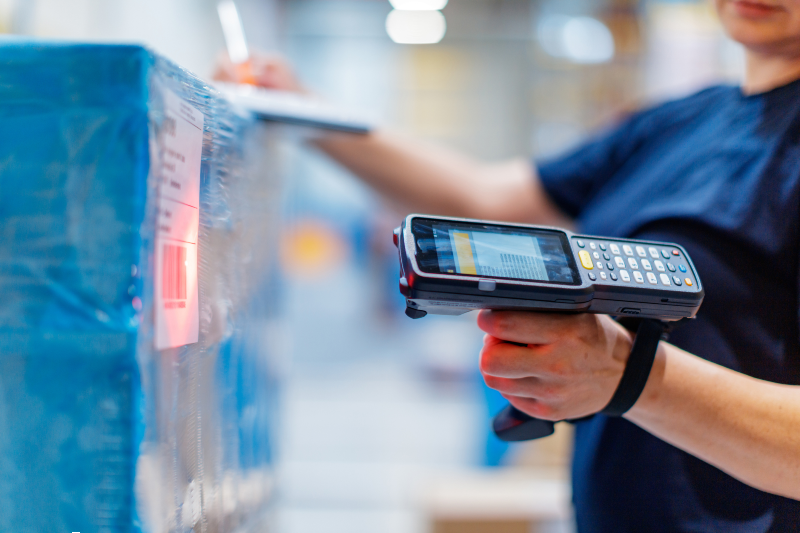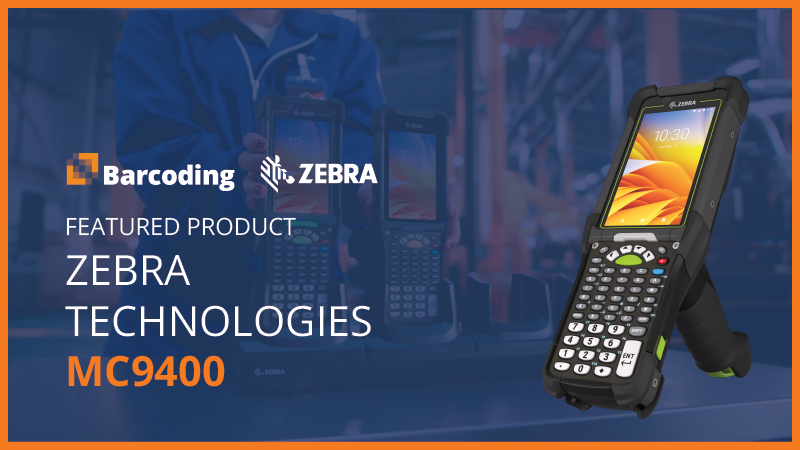In the right configurations and combinations, barcodes and scanners can be powerful tools to save time, reduce labor costs and worker errors, improve inventory control, and offer better customer service with instant visibility and item-level awareness.
But to get optimal benefits, you need to choose the right barcoding system, and the best suited barcode scanners for your information needs and your work environment. It’s vital to consider characteristics like connectivity, memory, functionality, convenience, durability for rugged applications, and more.
At this point, you may be asking, just how many types of barcode scanners are there?
The answer to that question depends on what you mean by type. The optical technologies at work in different scanners range from several different kinds of light to cameras. On the other hand, the format types — or physical designs of the scanners — can be generally categorized by how a user handles or interacts with the device.
Let’s take a look at six basic barcode scanner styles, including a range of permanently installed, wired, and portable wireless barcode scanners, including:
- Fixed mount
- In-counter
- Presentation
- Mobile computer
- Handheld
- Wearable
We’ll review similarities and differences between scanner types, each type’s pros and cons, and typical work environments for their diverse uses.
1. FIXED MOUNT BARCODE SCANNERS
Fixed mount scanners typically use lasers to read 1D and 2D barcodes, as well as direct part marking (DPM) barcodes, in high-speed environments like business, light industrial, assembly line, and access control checkpoints.
As the name implies, these devices are installed in a stationary location, and they can read barcoded objects as the items pass by at high speeds and high volumes. These scanners can be mounted at specific locations, angles, and distances, enabling them to read at high speed with great accuracy — on fast-moving conveyor lines, for example — and they are typically integrated into large, automated information processing systems.
Fixed mount scanners don’t require an employee to hold the device as items are scanned. This hands-free operation improves worker productivity. The scanners can be quite compact and easy to install in small spaces, such as laboratories and inspection counters, to improve speed and accuracy on the job. They can even be installed on forklifts or other material movers for use in warehousing applications.
Fixed mount barcode scanners are commonly used at security checkpoints, as in airports to scan boarding passes and QR codes on mobile phones. In industrial applications such as automotive, medical device, defense, and aerospace manufacturing, fixed mount scanners read DPM barcodes that are used to track and trace products.
2. IN-COUNTER BARCODE SCANNERS
In-counter scanners are similar to fixed mount scanners in that they are stationary — but these scanners are most often integrated into retail point-of-sale counters, where they can quickly read barcodes on items that pass over them, without the retail worker having to point the scanner or trigger the device.
Most people are very familiar with in-counter scanners, because they’re used in most large retail and grocery stores, in both cashier lanes and self-checkouts. In addition to being able to read product barcodes, in-counter scanners are used to read loyalty cards, coupons, mobile phone codes, and personnel badges.
3. PRESENTATION BARCODE SCANNERS (ALSO ON-COUNTER SCANNERS)
Presentation scanners rest on a counter, rather than being integrated into the counter, and users “present” items’ barcodes to the scanner. Like in-counter scanners, they have a wide reading area, and don’t require a user to hold or trigger the scanner.
Often, on-counter barcode readers are used in conjunction with in-counter scanners. This combination is commonly seen in retail and grocery stores, in cashier lanes and at customer self-checkouts, and most users already have a level of comfort with the devices.
4. MOBILE COMPUTER BARCODE SCANNERs
Sometimes mistaken for handheld scanners, handheld computer barcode scanners combine the functionality of both a portable barcode scanner and a PC, enabling workers to scan items and access important information from wherever they are.
While their pistol styling resembles many handheld scanners, mobile computer scanners typically include a small keyboard and screen, and their processing power is much greater. Most can store data in an internal memory, and can also communicate wirelessly via wifi, WLAN, or mobile data services.
Mobile PC scanners’ combination of processing power, convenience, and mobility enable their use in work environments such as warehouse management, retail, transportation and logistics, manufacturing, field service, and more, for a range of purposes, including:
- Asset tracking
- Price Checking
- Buy-online-pickup-in-store (BOPIS)
- Maintenance and repair
- Proof of delivery
- And more
TABLET & SMARTPHONE-STYLE BARCODE SCANNERS
Tablet, rugged tablet, and smartphone-styled scanners are similar in appearance and operation to consumer tablets and smartphones, making them easy for most workers to use within minimal training. They can run operating systems including Windows, Android, and iOs, to easily integrate into your operations.
These barcode readers typically use camera-based scanners, rather than light-based, They also deliver the processing power of a computer, enabling simple-to-use interfaces for an incredibly broad range of applications in retail, manufacturing, shipping, healthcare, field mobility, hospitality, and more:
- Concierge services
- Housekeeping
- Patient verification
- Asset management
- Task assignment
- Information lookup
- Mobile point-of-sale
- And more
Smaller devices are often assigned to individual workers, and they can be easily carried in a pocket.
5. HANDHELD BARCODE SCANNERS
Handheld scanners can include wired, wireless, and batch scanners. They’re most often designed much like a pistol, with an ergonomic handle and a trigger for the worker to activate the scanner while pointing the device at the barcode. Others are designed much like a TV remote, with a button to trigger the scanner. They’re generally intuitive in design and easy to use. They offer freedom of movement, reducing workers’ need to move items, as is the case with fixed and presentation scanners.
CORDED OR WIRELESS
Corded handheld scanners are often integrated into retail point-of-sale applications, where they often rest in a mount, but can be used as a handheld scanner to reach barcodes on large, heavy, or bulky items.
Cordless handheld scanners use radio frequency or Bluetooth technology for real-time data transmission such as inventory updates, or batch scanners, which store data internally until the worker returns the device to a cradle, where data can be uploaded to a host after batch scanning. Some wireless handheld scanners offer Bluetooth technology connection for integrating with devices such as laptops, tablets, and smartphones.
Uses for handheld barcode scanners — especially those with longer scanning ranges — include manufacturing, retail, grocery warehouse, healthcare, logistics, and field services.
6. WEARABLE BARCODE SCANNERS
Wearable scanners combine the mobility of handheld scanners with the hands-free convenience of fixed barcode scanners. They can be as simple as a point-and-shoot, reader and trigger style, or they can include keypads, processors, displays, and more. Most often, wearables use Bluetooth technology to communicate with a larger device and system.
Wearables are typically secured to the user’s hand, wrist, finger, or arm, most often using hook-and-loop closures — but they can also include head-mounted devices incorporating optical displays and audio functions. They free up workers’ hands, saving the time to stop, reach, scan, and put down a scanner, all movements that can add up to a lot of lost time over the course of a workday.
Wearables are designed for more rugged use, as one would expect of any wearable device.
They’re useful for retail, field service, item inspection, warehouse, and much more.
SELECTING THE RIGHT BARCODE SCANNER FOR YOUR NEEDS
As you can see, the vast selection of device styles and capabilities means you have an almost limitless range of choices. That’s a good thing, but it also means you need to choose wisely, and carefully evaluate capabilities against the specific features you need, from processing capability and connectivity options to display types and levels of durability.
It can get overwhelming pretty quickly, but our experts know exactly which questions to ask. We’re here to ensure that you have not only the exact equipment you need, but also the support to get the most out of your barcode scanners, no matter the application. Contact a Barcoding expert with questions, or for help in the process of selecting the right scanners for your business demands, your work environment, and your employees.







